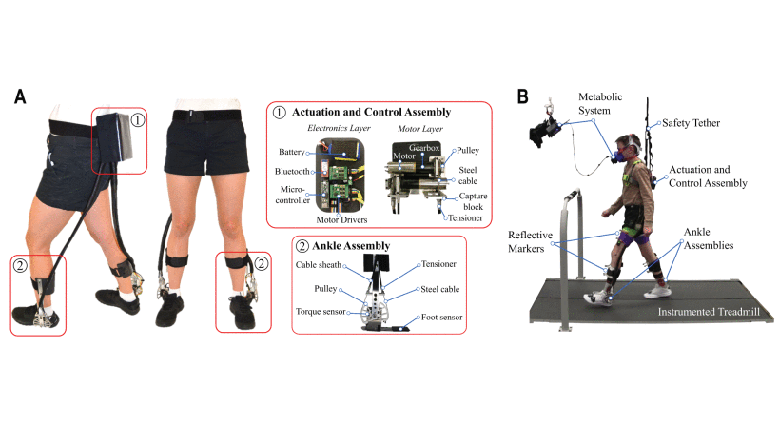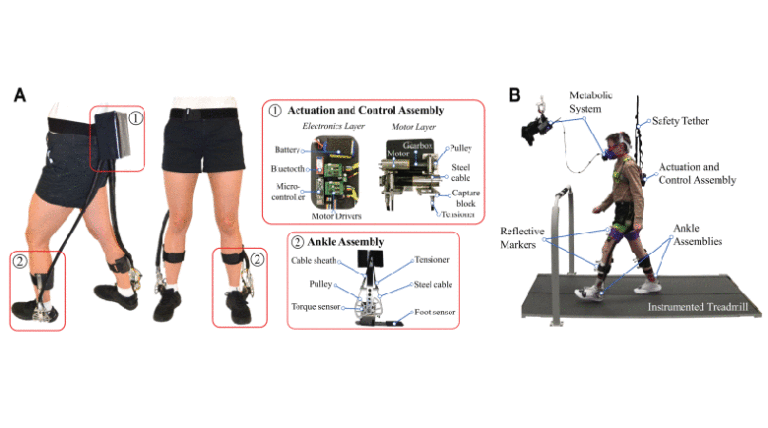
Lower-limb exoskeletons used to improve free-living mobility for individuals with neuromuscular impairment must be controlled to prescribe assistance that adapts to the diverse locomotor conditions encountered during daily life, including walking at different speeds and across varied terrain. The goal of this paper is to design and establish clinical feasibility of an ankle exoskeleton control strategy that instantly and appropriately adjusts assistance to the changing biomechanical demand during variable walking. To accomplish this goal, we developed a proportional joint-moment control strategy that prescribes assistance as a function of the instantaneous estimate of the ankle joint moment and conducted a laboratory-based feasibility study. Four individuals with neuromotor impairment and one unimpaired individual completed exoskeleton-assisted slow and fast gait transition tasks that involved gait initiation and changing walking speed. We found that the controller was effective in instantaneously prescribing exoskeleton assistance that was proportional to the ankle moment with less than 14% root-mean-square error, on average. We also performed a three-subject pilot investigation to determine the ability of the proportional joint-moment controller to improve walking economy. Evaluated in two individuals with cerebral palsy and one unimpaired individual, metabolic cost of transport improved 17–27% during treadmill and over-ground walking with proportional control compared with wearing the exoskeleton unassisted. These preliminary findings support the continued investigation of proportional joint-moment control for assisting individuals with neuromuscular disabilities during walking in real-world settings.

